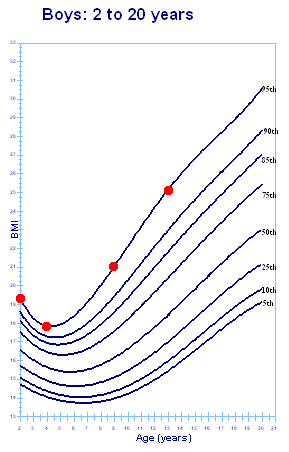|
Obesity
continued to increase dramatically during the late
1990s
- Nearly 33% of
all adults now classified as obese,
according to new data from the 1999-2000 National Health and Nutrition
Examination.
- Nowadays 31 % of
adults 20 years of age and over (~59 million people) have a body mass
index (BMI) of 30 or greater,
- In 1994 23 % of
adults were obese according
to the National Center for Health
Statistics,enters for Disease Control and Prevention (CDC).
- Number of Children
who are overweight
(defined as BMI-for-age at or above the 95th % of the
CDC Growth Charts) continues to increase.
Children and teens ages 6-19, 15 % (almost
9 million) are overweight according
to the 1999-2000 data, or triple what
the proportion was in 1980.
- Virtually a
doubling
in the number of obese persons over the past 20 yrs
has profound health implications. Obesity increases a person's
risk for a number of serious
conditions, including: diabetes, heart
disease, stroke, high blood pressure, and some types of cancer.
- Gender/Race:
More adult women are obese (33 %) than men (28 %), with the problem
greatest among non-Hispanic black women (50 %) compared with
Mexican-American women (40 %) and non-Hispanic white women (30
%). There was practically no difference in obesity levels among
men based on race/ethnicity.
CDC/NCHS Web site |

|

